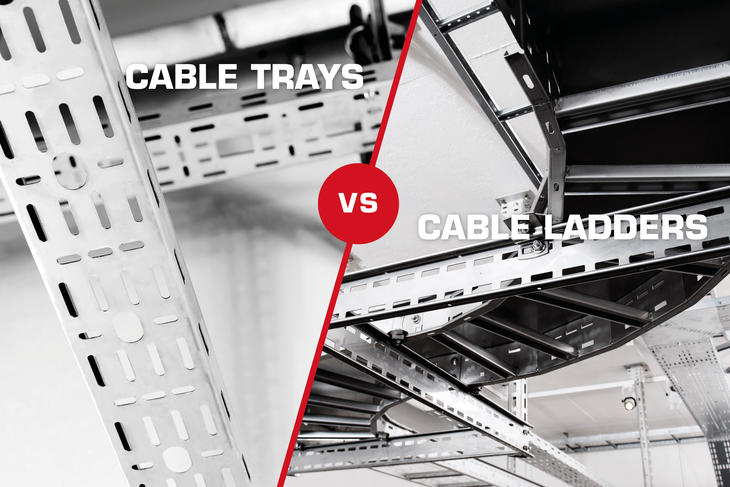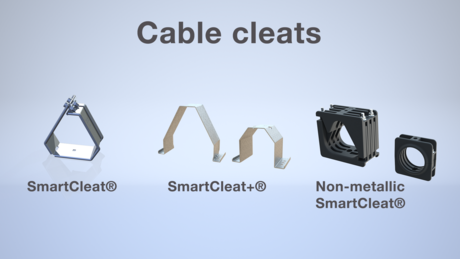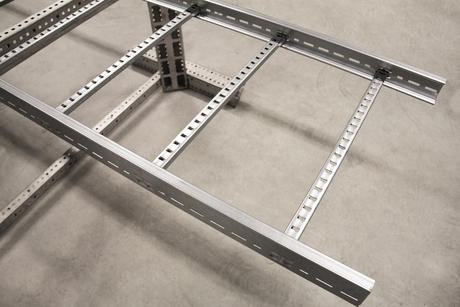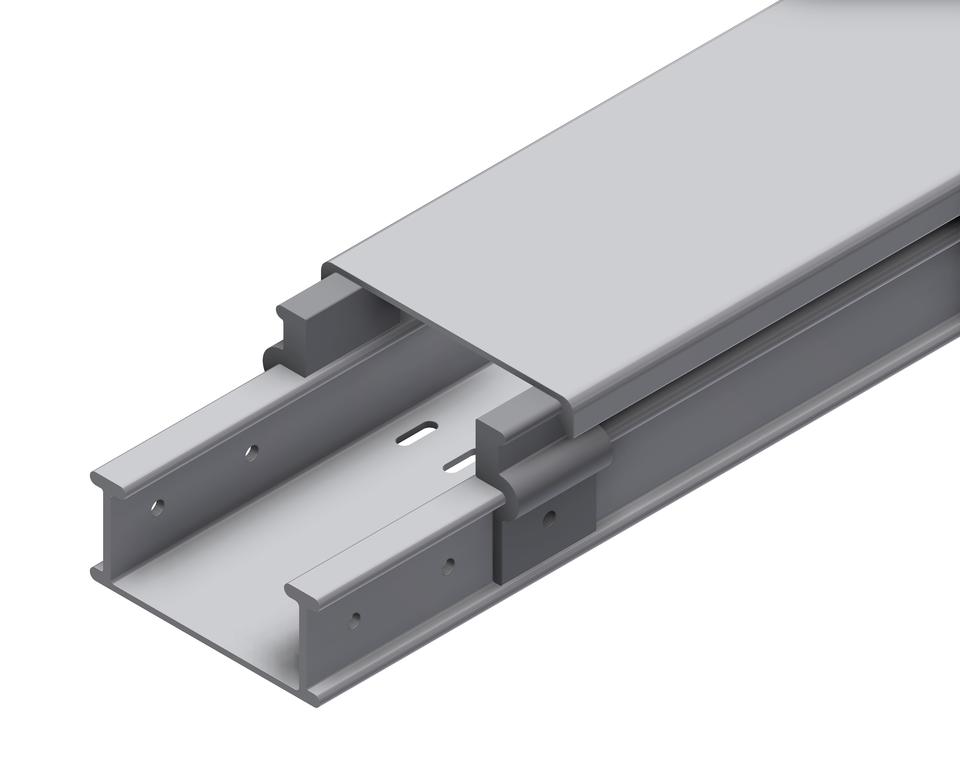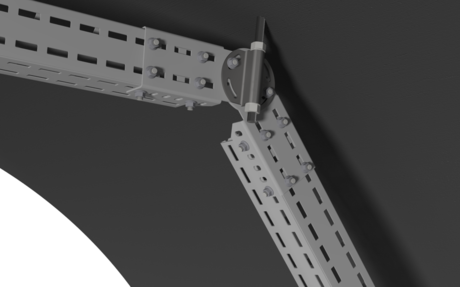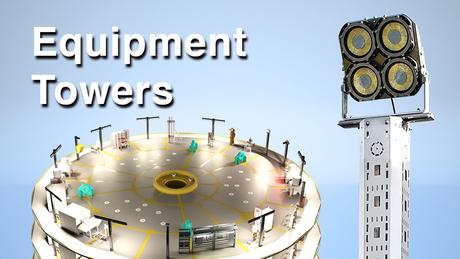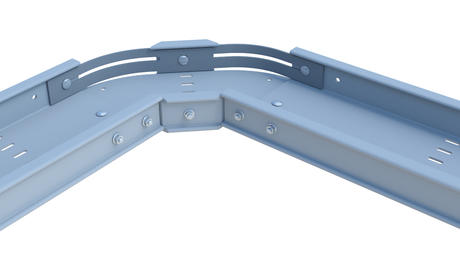Generally, cable ladders are preferred for supporting high volume or heavy cabling, especially if there are long spans between supports.
Cable trays are typically used for light weight cable support, in addition to instrumentation and tubing.
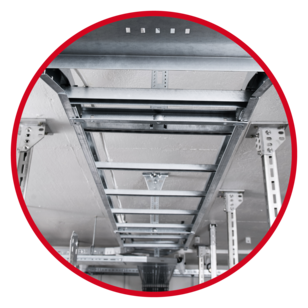 Cable ladder
Cable ladder
Other common names: ladder tray, cable runway
- Simple design consisting of side rails with rungs connected. The rungs are perforated, which makes it easy to fasten cable ties or cable cleats directly onto the ladder.
- Suited for electrical, instrumentation and telecommunications cables.
- Can support heavy cables, cable bundles and pipes at long support spans.
- Cables can enter and exit anywhere along the span.
- Ladders provide free air flow, which is essential to avoid overheating of cables.
- Minimal accumulation of water, moisture or dust.
- Cables are exposed and easily accessible – making inspection and future modifications uncomplicated.
- Covers can be added to protect cabling against UV, snow/ice and vandalism.
- Oglaend System’s fittings such as elbows, tee pieces, cross pieces and risers make it easy to change direction or level of the cable ladder span. These solutions require minimal space.
- Cable ladders are typically supplied in 3 or 6-meter lengths.
Cable tray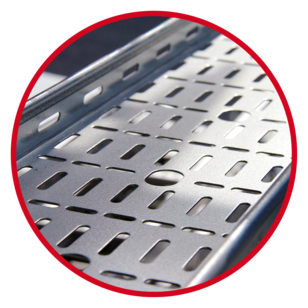
Other common names: trough, ventilated cable tray
- Consists of a single sheet of metal. Many cable trays have slot patterns, which makes it easy to position equipment and fasten cable ties and other fixings, such as tubing clamps.
- Suited for light electrical and instrumentation cables and tubing.
- The bottom coverage helps reduce electromagnetic interference, while the perforations enable water drainage and ventilation.
- Trays provide additional support and prevents cables from drooping, which could potentially damage the circuit’s performance.
- Cable trays are the most aesthetically pleasing option. In buildings with no panelled ceiling, cable trays can be a great option for hiding cables whilst keeping them organised.
- Covers can be added to protect cabling against UV, snow/ice and vandalism.
- Cable trays are typically supplied in 3-meter lengths.
We’ll help you find a solution that suits your needs!
In most cases cable ladders are the preferred choice, however; cable trays are better suited when aesthetics and radio/electromagnetic interference are important considerations. Cable trays are also useful for protecting sensitive cabling and tubing.
Our global sales force is happy to answer any questions you might have about our cable ladders and cable trays.
